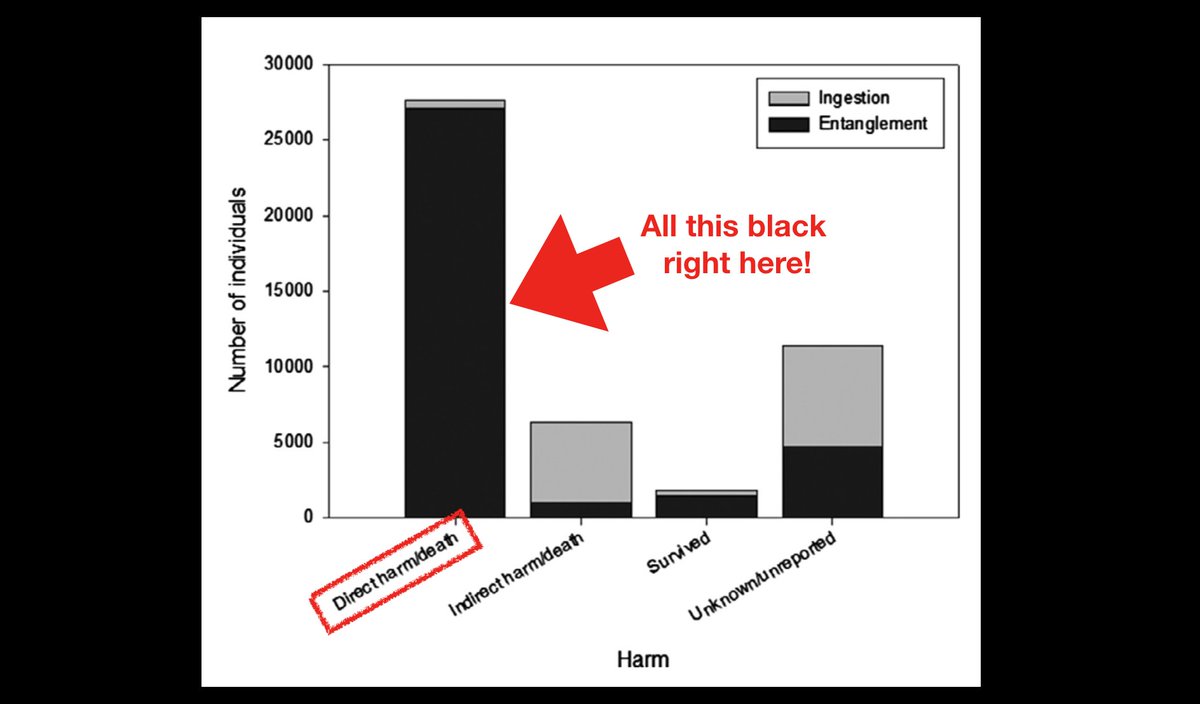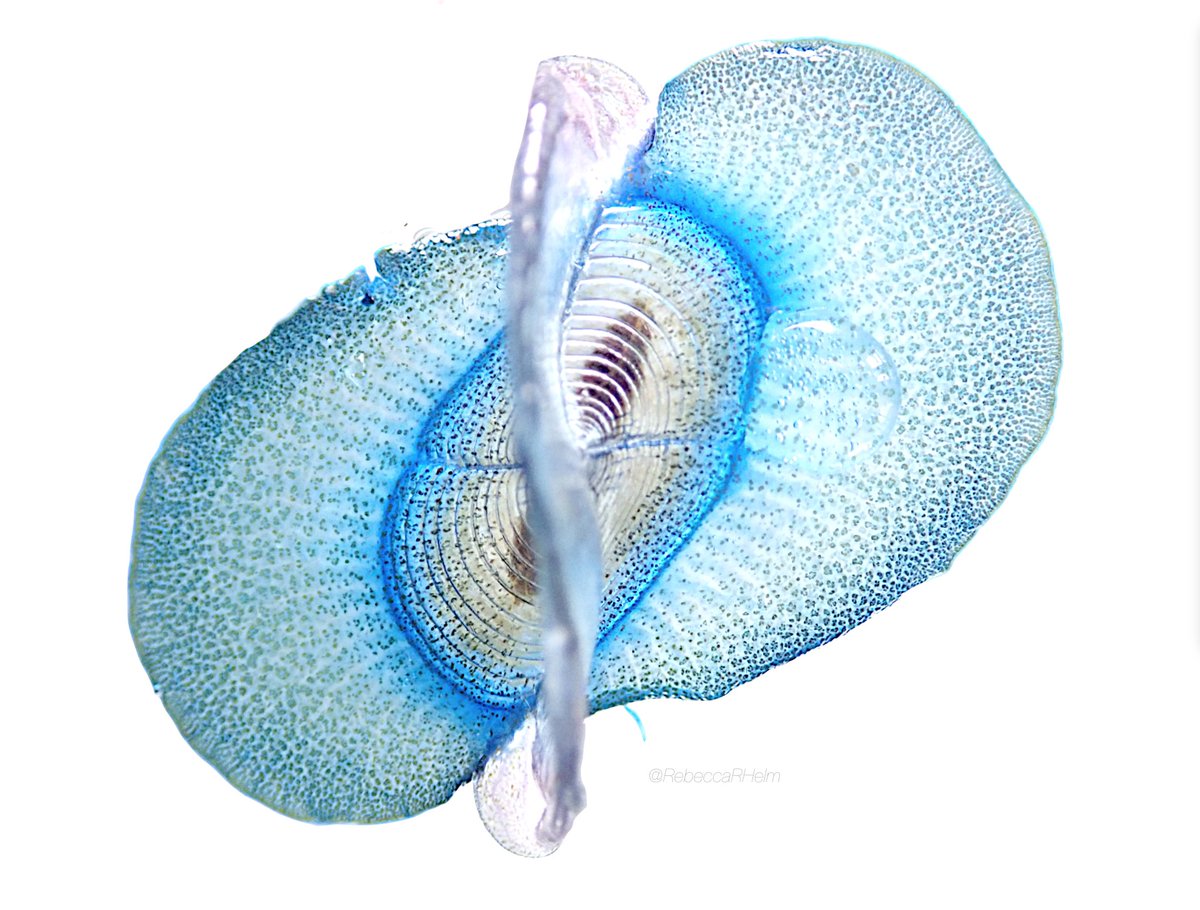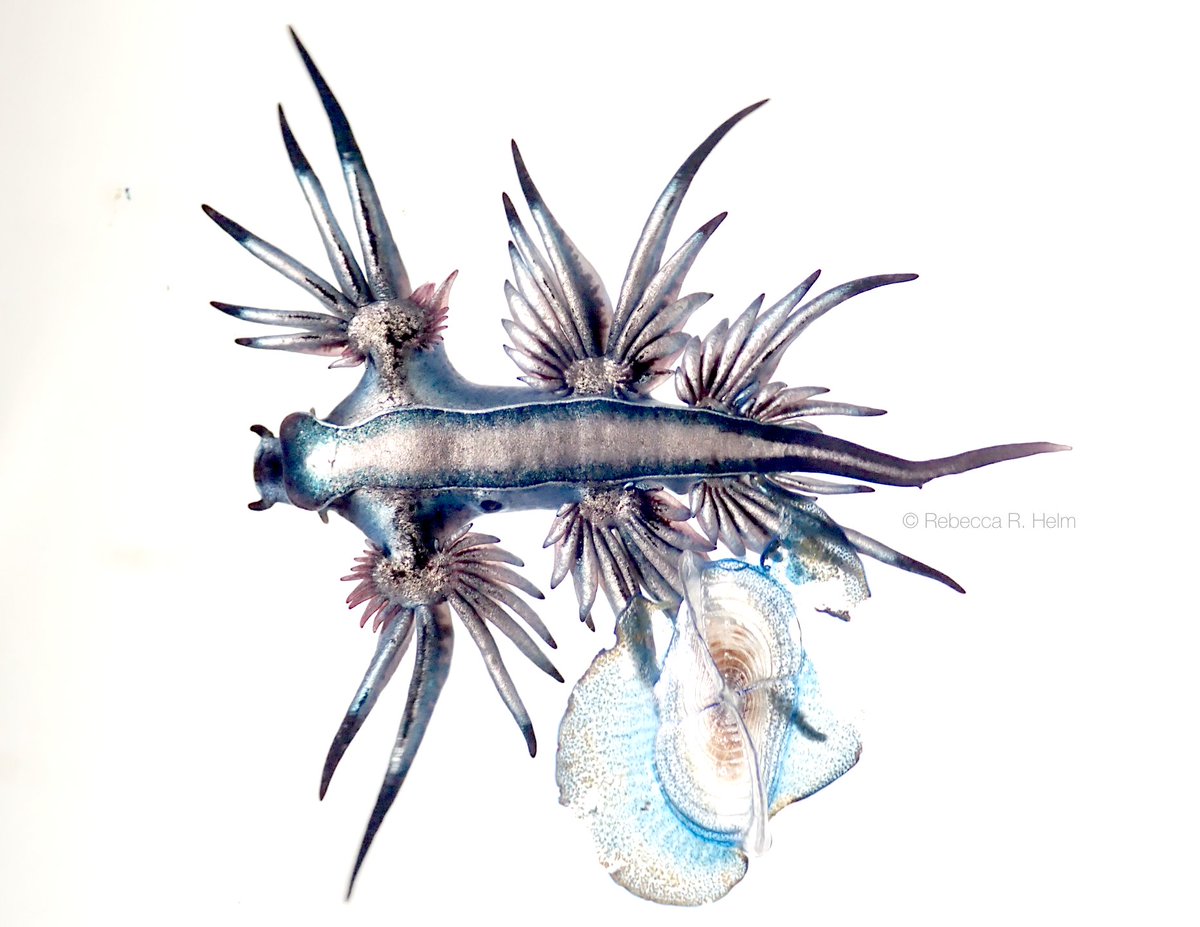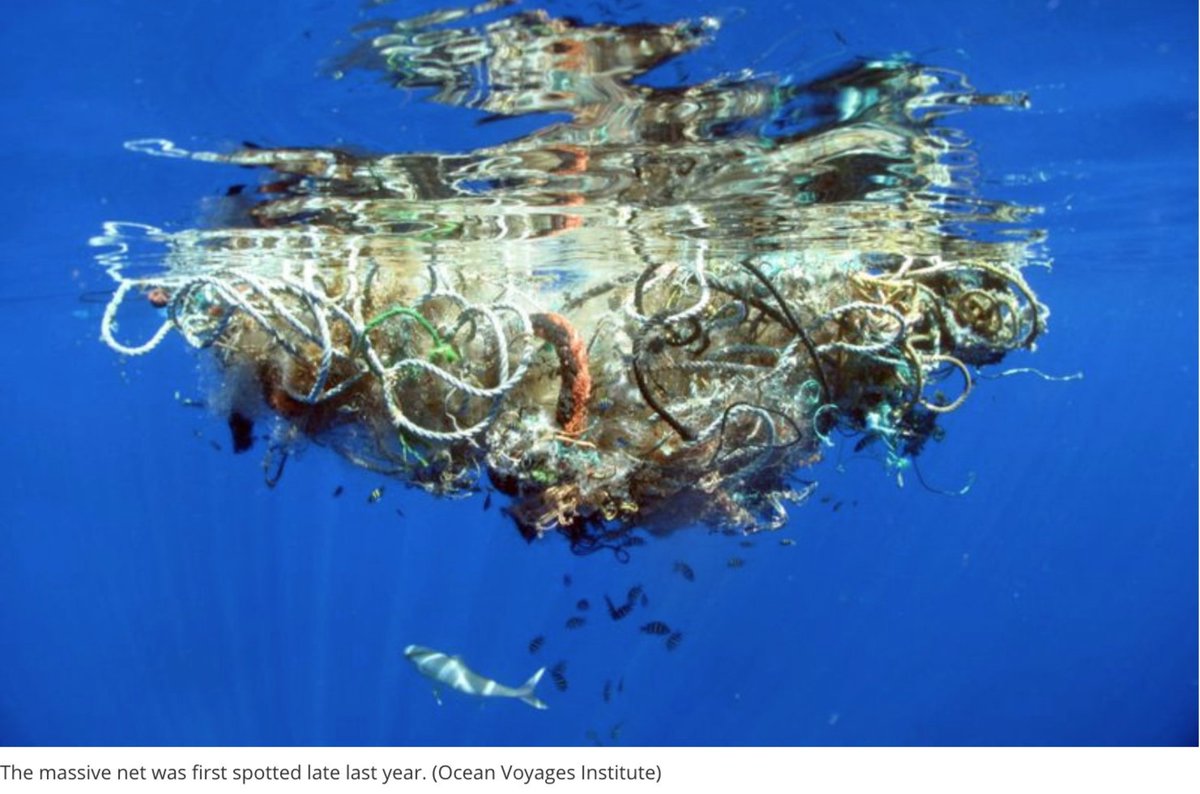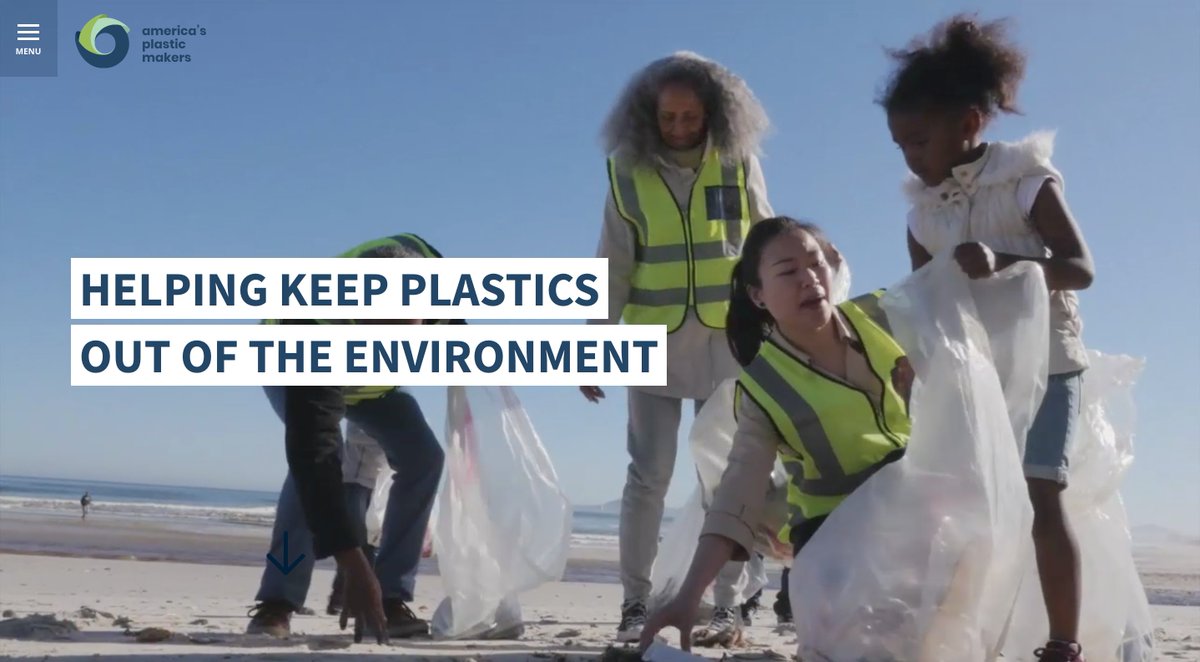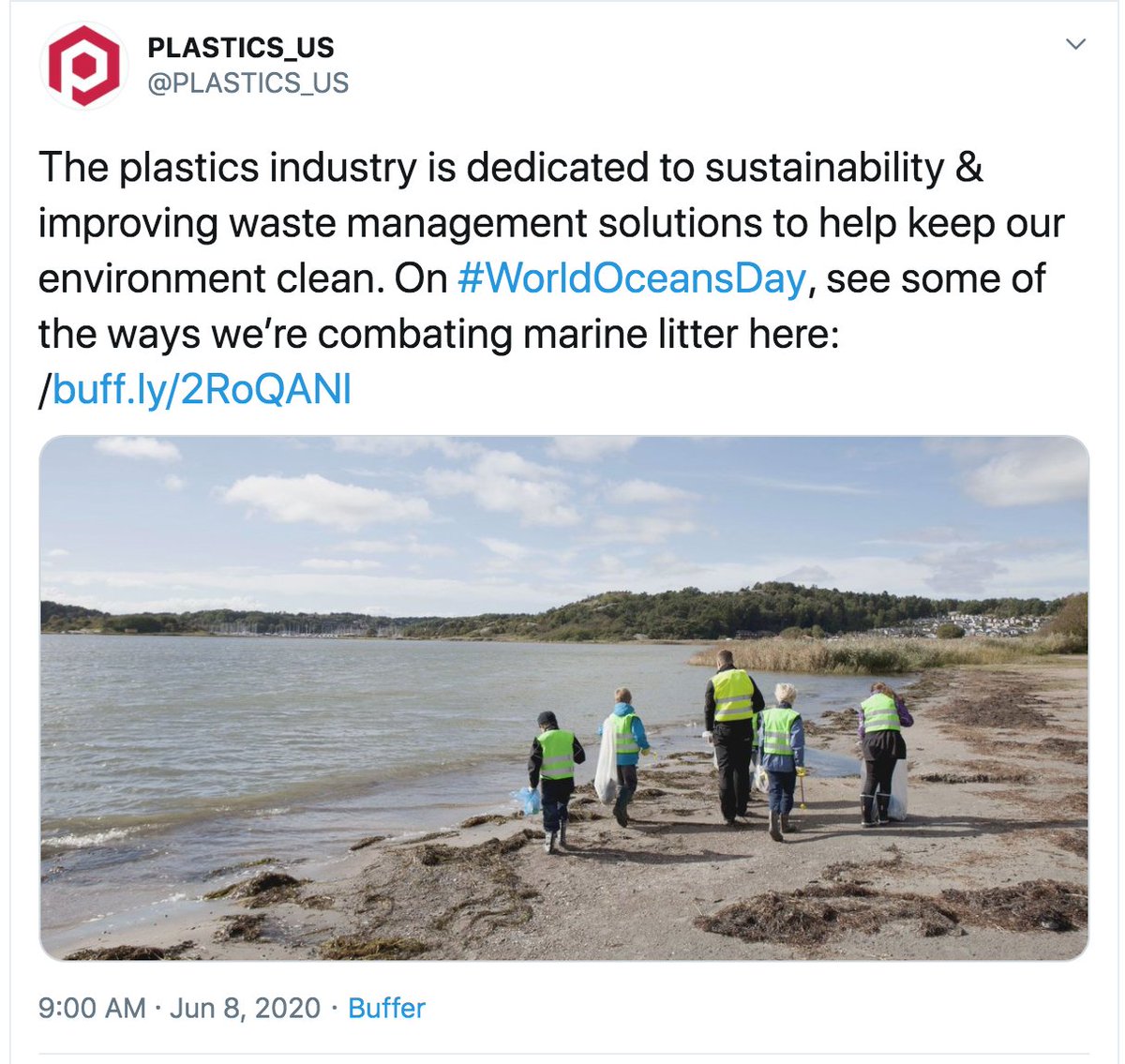This is a big deal, but let& #39;s talk about all the reasons WHY this a big deal (not *just* that they collected lots of plastic), and how to REALLY fix this...
[a thread] https://twitter.com/RebeccaRHelm/status/1276932823249637376">https://twitter.com/RebeccaRH...
[a thread] https://twitter.com/RebeccaRHelm/status/1276932823249637376">https://twitter.com/RebeccaRH...
There is lots of plastic in the open ocean, which tends to concentrate in areas like the North Pacific Subtropical Gyre convergence zone (aka the Great Pacific Garbage Patch). Most of the plastics are hard plastics, fishing nets, etc. plastic bags and plastic straws are issues...
That tends to occur closer to shore. They don& #39;t often make it this far out (I saw often because nothing is black or white). What is much more common in the open ocean are ghost nets....
[image from wiki]
[image from wiki]
If you look at marine life death-by-plastic, entanglement is the NUMBER ONE KILLER OF MARINE LIFE. By a LOT. So when you& #39;re cleaning up plastic...
Study: https://www.sciencedirect.com/science/article/abs/pii/S0025326X14008571">https://www.sciencedirect.com/science/a...
Study: https://www.sciencedirect.com/science/article/abs/pii/S0025326X14008571">https://www.sciencedirect.com/science/a...
Targeting plastics that harm marine life disproportionally is a good start, BUT...
You have to be there! You have to see what& #39;s stuck. You have to free it. You have to ensure the community that may have grown around the plastic is safe and minimally impacted...
It& #39;s hard work, it& #39;s not glamorous, but it& #39;s important to the ecosystem of the open ocean. If you indiscriminately run plastic cleanup devices through the ocean& #39;s surface, you& #39;re going to catch everything that lives that. Your bycatch will be HUGE...
Unmonitored plastic cleanup devices on the ocean& #39;s surface will catch EVERYTHING THAT LIVES THERE. Like these by-the-wind sailors & blue sea dragons (there are 2 species of blue sea dragons that have only been found in the Garbage Patch)...
The Ocean Voyages Institute ( @oceancleanup) is removing the most dangerous plastics from the ocean& #39;s surface in a way that doesn& #39;t endanger blue sea dragons (and other floating life)...
And for animals that live on\around plastics (called & #39;rafters& #39;), cleaning up plastic in person means you can ensure these animals remain safe too! The ocean is not a swimming pool that you can use a giant pool skimmer to clean up. You need to BE THERE...
Let& #39;s look at an intuitive example. Is THIS ok? No? Why? Because turtle eggs, hermit crabs, clams, all live IN SAND. We must remove plastic from the environment in a way that does not also harm the animals living there. BUT... https://twitter.com/techinsider/status/1274994282785538050">https://twitter.com/techinsid...
We NEED to put pressure on PLASTICS MAKERS. Just look at all the happy people cleaning up plastic at @plasticmakers-- PART OF THE The American Chemistry Council that represents companies making PLASTICS, POLYURETHANES AND POLYSTYRENE...
Look at all the happy people picking up plastic form @PLASTICS_US!! They may say they& #39;re doing something, but we need MORE. A LOT more.
We need to hold companies and governments ACCOUNTABLE. These solutions are going to cost MONEY. They& #39;re going to take TIME. And if a CEO& #39;s salary is based on how well that company did, how much it made, chances are these issues are not a priority unless we MAKE them one...
HERE& #39;S WHAT WE GOTTA DO:
1. Spread the word! #PutPressureOnPlastics!
2. Recognize that personal guilt is a powerful tool to disarm you, so...
3. AMPLIFY voices fighting for INDUSTRY & GOVERNMENT solutions...
4. GET your legislature involved! Share new bills FAR AND WIDE!...
1. Spread the word! #PutPressureOnPlastics!
2. Recognize that personal guilt is a powerful tool to disarm you, so...
3. AMPLIFY voices fighting for INDUSTRY & GOVERNMENT solutions...
4. GET your legislature involved! Share new bills FAR AND WIDE!...

 Read on Twitter
Read on Twitter![That tends to occur closer to shore. They don& #39;t often make it this far out (I saw often because nothing is black or white). What is much more common in the open ocean are ghost nets....[image from wiki] That tends to occur closer to shore. They don& #39;t often make it this far out (I saw often because nothing is black or white). What is much more common in the open ocean are ghost nets....[image from wiki]](https://pbs.twimg.com/media/EbjLUy0XsAAyi1H.jpg)
